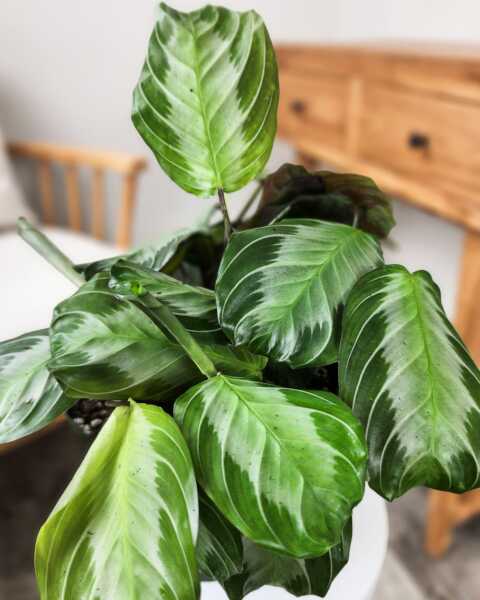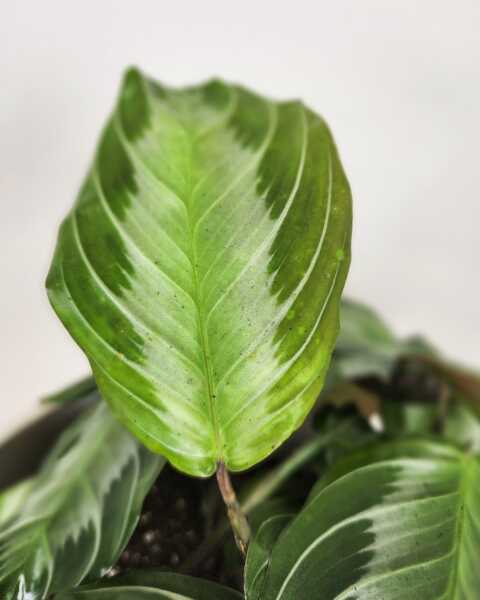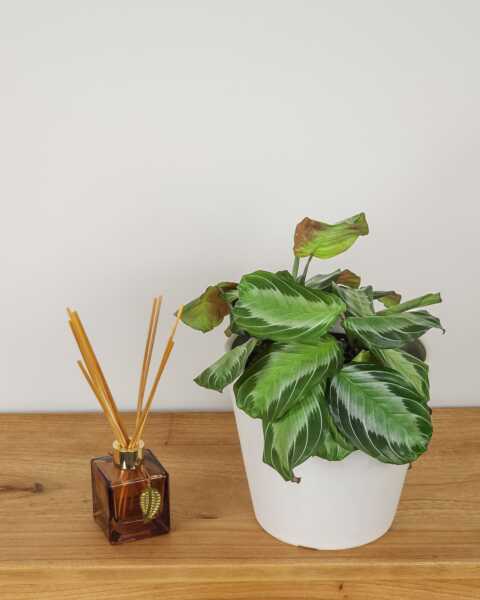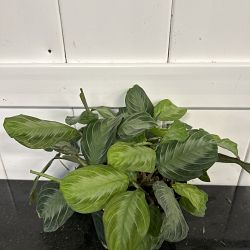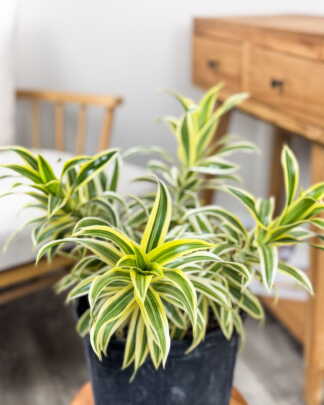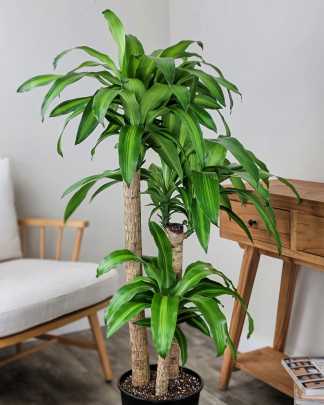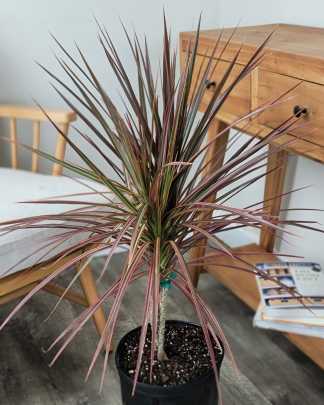Description
Caring for your Maranta
The plant is native to Asia, Africa, and Brazil and belongs to the Marantaceae family. This plant, in particular, is considered difficult to grow compared to the other plants, and you need to be more vigilant with the care. Let’s look at the care guide to learn all there is to know.
Light
The best place to keep your Maranta leuconeura is in bright sunlight. Filtered bright light is the best choice as the plant is sensitive to direct sun, which can burn the leaves and even prove fatal. When thinking about the space in your home, you can try keeping the potted plant near windows with shade. If the light is intense, there is also a possibility of the leaves curling up, which is a telltale sign that your plant is not very fond of the light it has been receiving lately.
Soil
You do not need a special potting mix to grow the Maranta. However, you must pay attention to the soil and ensure that the mixture drains well. You can get a pot that has drainage holes and use a well-draining mixture that can include a combination of perlite and coarse. The ideal pH level for optimal growth is between 5.5 and 6.0. However, the hardiness zones lie between 11 and 12.
If you use a peat-heavy mix, you won’t have to water your plant a lot, and it will not dry up too fast.
Water
The Maranta plant does not prefer staying dry. This is why it is important for you to keep a regular watering schedule that allows you to water the plant on time and as needed. If the leaves have started to curl up from the center, you need to water your plant as soon as possible. The soil must remain moist, so you need to keep up with the watering schedule.
Fertilizer
For steady growth, your plants must have the right fertilizer. If you feel your plant needs fertilizer, you can feed it water-soluble fertilizer between spring and fall. Fertilizers are important, especially if your plant is in the growing stages. Be sure to choose high-quality fertilizers, so they don’t damage your plant. You don’t need fertilizer in the winter as your plant becomes dormant.
Common Issues
The plant is not very susceptible to issues, but there are a handful of things you must know about to avoid them easily.
Pests
Pests like Spider mites and mealy bugs are very dangerous for the plant. These pests can lay eggs on your plant, and the larva will start feeding off of the leaves, causing them to grow weaker and die. To get rid of these pests, you can use pressured water and wash them all off.
Disease
Most plants are prone to catching a disease, which is very likely if you do not take the care you should. Brown Leaf tips, leaf spots, and root rot are the most common diseases. All of them can severely damage the plant, and the best way to treat them is to prevent them from happening.
Pruning
If you want to promote growth, then you need to prune the leaves and increase the energy flow to all the healthy parts of the plant. You can prune the plant by cutting the leaves and doing it at any time of the year. However, if you prune the plant during spring, then that will improve the growth significantly.
Propagation
To prune the plant, you will need to add a node in your cutting. It is possible for the leaf-cutting to not work the way you expect it to. To propagate, you can keep the cuttings in the water, and the roots will start forming on their own.
Potting/Repotting
The Lemon Lime prayer plant has shallow roots, and you can repot the plant in the spring. These plants grow rather quickly, and you might have to go up multiple sizes. Or, if you want more plants, you can divide a single plant into smaller plants and pot them easily. It is important to remove all the old soil and put it in the new one. After repotting, it is important to keep the plant in a shelter.

